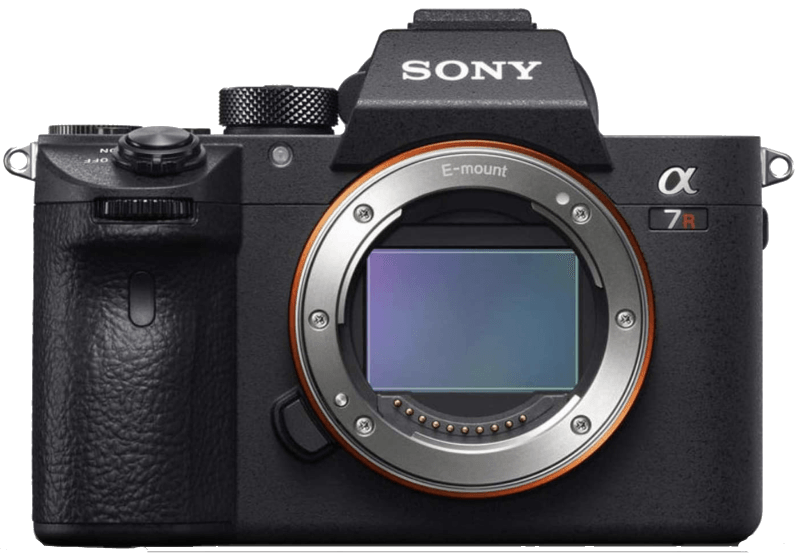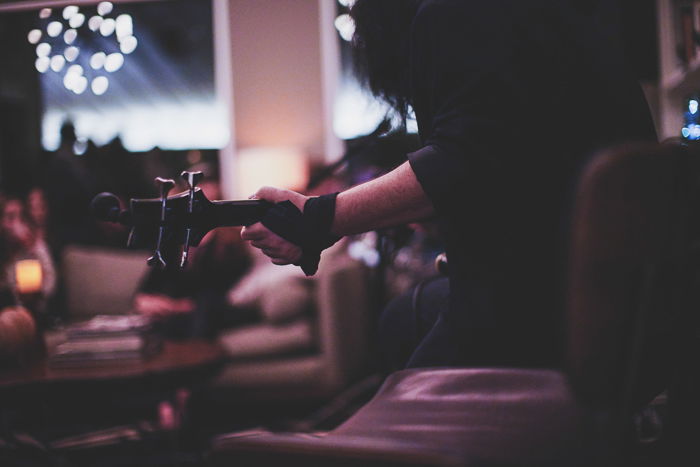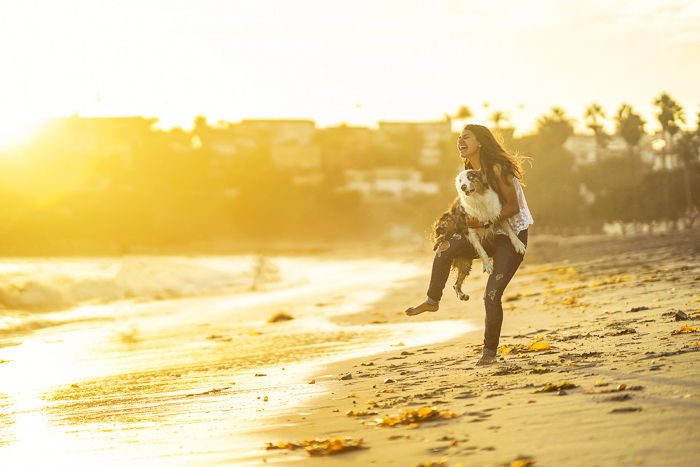I had never used a Sony camera before buying the Sony a7R III model. I have been a longtime loyal Canon user for over 16 years. In fact, I hadn’t even held a mirrorless camera before grabbing this model, let alone used one. This review is my unbiased opinion on this camera. So, read on to see how that journey worked out for me and whether you might want to join me!
Comparing the Sony a7R III Mirrorless Camera to Digital Cameras
Before we jump into this review, let’s have a quick chat on what a mirrorless camera even is. And how this new technology compares to digital cameras (DSLRs). As you may or may not know, part of the way that a digital camera works is that a mirror inside the camera reflects the light up to the optical viewfinder. This is also how you see the image before you take it. In a mirrorless camera, there is no optical viewfinder. Instead, the imaging sensor is exposed to light at all times. This gives you a digital preview of your image either on the rear LCD screen or an electronic viewfinder (EVF). As such, a mirrorless camera doesn’t need nor have a reflex mirror, a key component of DSLR cameras. <img class=“aligncenter wp-image-45441 size-full” src=“https://expertphotography.com/wp-content/uploads/2018/11/Sony-a7r-iii-19.jpg" alt=“Dreamy pet portrait of a dog standing on a beach, shot with a Sony a7R III mirrorless camera” width=”700″ height=”467″ /> Due to the lack of mirror, the camera is made smaller and lighter than a DSLR. This is one of the most obvious differences between the two. But DSLRs are well trusted because of their true-to-life through-the-lens optical viewfinder system. This uses a series of mirrors to reflect light to your eye. Mirrorless cameras, on the other hand, have an electronic viewfinder or LCD screen for image monitoring. This was something that prevented me from trying mirrorless cameras in the first place. Only to find out that my preconceived notions about this were wrong! More on that in a bit. Mirrorless cameras and DSLRs tend to come to a draw when comparing optical quality, image sensors, technical aspects, and adeptness at shooting conditions. Both are equally spectacular, with each model having their own pros and cons (of course). And it does come down a lot to personal choice. <img class=“aligncenter wp-image-45440 size-full” src=“https://expertphotography.com/wp-content/uploads/2018/11/Sony-a7r-iii-18.jpg" alt=“A dog jumping for a Frisbee outdoors, shot with a Sony a7R III mirrorless camera” width=”700″ height=”467″ /> Now that we’ve gotten this information out of the way, on to the review!
Sony a7R III Overview and Specifications
42.4 MP 35 mm full frame Exmor R™ CMOS and enhanced processing system; Standard ISO 100-32000 range (upper limit expandable to 1024005 and low limit is 50); Fast Hybrid AF with 399-point focal-plane phase-detection AF and 425-point contrast detection AF. The focus modes include AF-A (Automatic AF), AF-S (Single-shot AF), AF-C ( Continuous AF), DMF (Direct Manual Focus), Manual Focus; Face detection, with Modes: Face Priority inAF(On/Off), Face Priority in Multi Metering (On/Off), Regist. Faces Priority (On/Off), Face registration, Max. number detectable: 8; High-speed continuous shooting of up to 10fps12 with AF/AE tracking 5-axis image stabilization with 5.5-stop exposure advantage20; 4K video recording; Dual card slots with simultaneous or consecutive recording; Silent Shooting Mode.
<img class=“aligncenter wp-image-45431 size-full” src=“https://expertphotography.com/wp-content/uploads/2018/11/Sony-a7r-iii-9.jpg" alt=“A low light concert photography shot of a musician onstage, shot with a Sony a7R III mirrorless camera” width=”700″ height=”467″ /> The camera is compatible only with Sony E-mount lenses. These inlcude G-Master and Zeiss lenses (sought after in the Sony world). The aspect ratio is 3 : 2, and the camera is able to record still images in JPEG (DCF Ver. 2.0, Exif Ver.2.31, MPF Baseline compliant) and RAW (Sony ARW 2.3 format). Due to the large amount of megapixels, images are quite large: 35mm full frame L: 7,952 x 5,304 (42M). The camera does have built-in noise reduction software that you can turn on or off.
Physical Build
The camera itself is beautiful. Aesthetically pleasing, the Sony a7R III is a stunning piece of equipment. And it comes with excellent package branding to boot. <img class=“aligncenter wp-image-45424 size-full” src=“https://expertphotography.com/wp-content/uploads/2018/11/Sony-a7r-iii-2.jpg" alt=“A female model posing outdoors shot with a Sony a7R III mirrorless camera” width=”467″ height=”700″ /> The camera is sized at 5 inches long, 3 ⅞ inches tall, and 3 inches wide at roughly 1.45 pounds (with the battery inside). The small size actually feels very comfortable in hand. And it has a textured grip nicely formed for holding. The body is sturdy and weather sealed. The design is clean and minimal. The button design and location were a little odd for a Canon user. Some of the dials seemed illogically placed (in my opinion). I ended up switching the shutter dial and aperture dial as the latter was placed in the back (an odd spot for it).
Ease of Use
<img class=“aligncenter wp-image-45436 size-full” src=“https://expertphotography.com/wp-content/uploads/2018/11/Sony-a7r-iii-14.jpg" alt=“A dog portrait on a beach shot with a Sony a7R III mirrorless camera” width=”700″ height=”467″ /> Although it took me a moment to get used to the camera, it is very easy to use. The buttons are soft and responsive, and the LCD touch screen is quite sensitive. But the LCD is fairly useless other than for selecting a focus point. The touchscreen capability otherwise serves no functional purpose. It is notable to mention that upon turning the camera on, the start up is pretty fast. The only time where I found it to lag is going between the back display to the EVF. It took a second to switch over to that viewing mode. The display screen does flip up and down. This helps get those low or high angle shots without having to contort your entire body. I find this to be immensely useful for my photography. Especially when photographing animals! My chiropractor is quite impressed as well, my back has been saved by the addition of a movable LCD screen. The menu is very easy to use and understand, and funny enough, extremely similar to that of the Canon DSLRs. Each facet of the camera is completely customizable. As someone who loves modifying equipment for my own comfort, this is a welcome sight. Otherwise, the camera functions the same as any camera. Half press on the shutter to focus / lock focus and full press to take the shot.
Autofocus
One word: FAST. This camera is incredibly fast. Even at 10 frames per second, the camera keeps focus for all your extra fast shooting. I believe that the autofocus is where the mirrorless truly shines. It’s in front and well beyond most other cameras out there. <img class=“aligncenter wp-image-45434 size-full” src=“https://expertphotography.com/wp-content/uploads/2018/11/Sony-a7r-iii-12.jpg" alt=“A small dog sitting on a wooden table shot with a Sony a7R III ” width=”700″ height=”467″ /> I photograph a lot of action, and I took this camera out to a frisbee dog competition to test it out. I was blown away by the autofocus. The camera was even able to recognize the face of a dog with its facial tracking autofocus (not just a person). And it held the focus on the dog throughout its entire trick-induced performance. I have always had to refocus multiple times on my DSLRs, but didn’t even have to refocus once on the Sony a7R III. With the 399 focus points on the Sony a7R III and its ability to track focus like no other, it’s hard to get a shot that’s out of focus. This camera is like an artificial intelligent robot. It can predict and figure out exactly what you want in focus. With the thumb joystick on the back of the camera you can easily and quickly change your focus point. The AI Servo is out of this world. It could figure out an entire outline of a subject and hold onto that for dear life. <img class=“aligncenter wp-image-45432 size-full” src=“https://expertphotography.com/wp-content/uploads/2018/11/Sony-a7r-iii-10.jpg" alt=“Three musicians performing, shot with a Sony a7R II camera” width=”700″ height=”467″ /> As well as this, the camera has an ‘eye autofocus’ setting. You read that right. The camera has the ability to find eyes on your subject and lock focus on them with the push of a button. This is photography witchcraft and I love it.
Sharpness and Clarity
Although much of the final quality and look is the lens, in this case, the camera does play a big role. This is where the Sony mirrorless cameras begin to stand out significantly. The images are extremely sharp and clear, to some, maybe even artificially so. The look is very distinct. Professional photographers can quite easily pick out a Sony mirrorless photograph from the rest. With the Sony a7R III, the sharpness and clarity is even more advanced. Every speck of flying sand visible clearly when zoomed into the image. The file size is incredibly large due to the 42.4 working megapixels. This means you can see every hair on a dog – regardless of what lens you use. Some may find this to be a bit too intense, but I personally love it. I no longer have to use Lightroom or Photoshop to sharpen images when using this camera. <img class=“aligncenter wp-image-45429 size-full” src=“https://expertphotography.com/wp-content/uploads/2018/11/Sony-a7r-iii-7.jpg" alt=“A musician performing onstage, shot with a Sony a7R III mirrorless camera” width=”467″ height=”700″ />
Color Rendering
Much like sharpness and clarity, the color range is also quite unique to Sony Alpha cameras. With vivid, vibrant, and deep colors, there is little editing I need to do with this camera. Even in low light, the colors tend to be quite true.
Low Light Capability
<img class=“aligncenter wp-image-45432 size-full” src=“https://expertphotography.com/wp-content/uploads/2018/11/Sony-a7r-iii-10.jpg" alt=“Three musicians performingindoors, shot with a Sony a7R III mirrorless camera” width=”700″ height=”467″ /> I photograph a lot of live concerts and low light events. This is why I was really excited to see what this camera could offer. For still portraits or still life, the low light is superb. Very little noise at extremely high ISO levels. And the camera had no trouble figuring out where the focus needed to be and locking it. Colors are true and images are beautifully smooth and clear. When it came to action at a concert, that was a different story. Unfortunately, the moment strobes are involved, the camera has significant issues. I will be sticking to my Canon 5D Mark IV for live concerts. The Sony a7R III is far too unreliable in difficult lighting conditions that involve strobes. <img class=“aligncenter wp-image-45428 size-full” src=“https://expertphotography.com/wp-content/uploads/2018/11/Sony-a7r-iii-6.jpg" alt=“A musician performing onstage, shot with a Sony a7R III mirrorless camera” width=”700″ height=”467″ /> Achieving focus in low light wasn’t difficult. If the camera hunts for focus, it does have an infrared focus assist beam. This may be where the strobes caused an issue, as the infrared may have been confused by strobing lights.
Battery Life
Like I’ve said before, I hadn’t previously used Sony Alpha models. My frame of reference for the battery life is that of my Canon 5D Mark IV, Canon 5D Mark III, and Canon 7D Mark II. All three are Canon’s newer model cameras. In my experience, Sony batteries are not nearly as powerful or long lasting as Canon’s batteries. <img class=“aligncenter wp-image-45427 size-full” src=“https://expertphotography.com/wp-content/uploads/2018/11/Sony-a7r-iii-5.jpg" alt=“A dog jumping for a Frisbee outdoors, shot with a Sony a7R III mirrorless camera” width=”700″ height=”467″ /> When I purchased my Sony camera, I went ahead and bought a second battery as well. I am glad that I did, because the battery does not last me all day like with the Canon cameras. I seldom end up switching to a second Canon battery. Even after shooting a dog agility trial for eight hours without turning the body off. But I found myself switching to the second battery on my Sony within about four hours of use. I believe this is due to the LCD and digital viewfinder constantly being in use. So the battery life is not the strong suit of the company. But speaking to other Sony Alpha owners, the battery of the Sony a7R III is significantly improved over its predecessors. The battery lasts about 1,500 shots in normal shooting. <img class=“aligncenter wp-image-45426 size-full” src=“https://expertphotography.com/wp-content/uploads/2018/11/Sony-a7r-iii-4.jpg" alt=“A dog jumping for a Frisbee outdoors, shot with a Sony a7R III mirrorless camera” width=”700″ height=”467″ />
Final Thoughts
This review is centered on the photography / still portion of this camera. There is an equal positive novel that one can write on the videography portion. I don’t do video enough to be the one to write on this. But I can say that the autofocus makes video very easy to do on this model! I have absolutely no regrets in investing top dollar in this mirrorless camera. I find myself using the Sony a7R III just as much as any of my DSLRs (and I have three of them!). Oftentimes, I’ll pick the mirrorless for more complex shoots due to its exquisite face tracking with auto focus. The quality is superb, and storage is a breeze with its small size. I nabbed a Metabones Smart Adapter to be able to use my Canon L lenses on the Sony mirrorless body. The pairing works brilliantly (so I don’t even need to adapt my kit very much!). <img class=“aligncenter wp-image-45425 size-full” src=“https://expertphotography.com/wp-content/uploads/2018/11/Sony-a7r-iii-3.jpg" alt=“A dog jumping for a Frisbee outdoors, shot with a Sony a7R III mirrorless camera” width=”700″ height=”467″ /> If you’re looking for a mirrorless camera that will take your breath away, I believe this is the one for you. Not sure? Read our Sony A7R IV review next!








